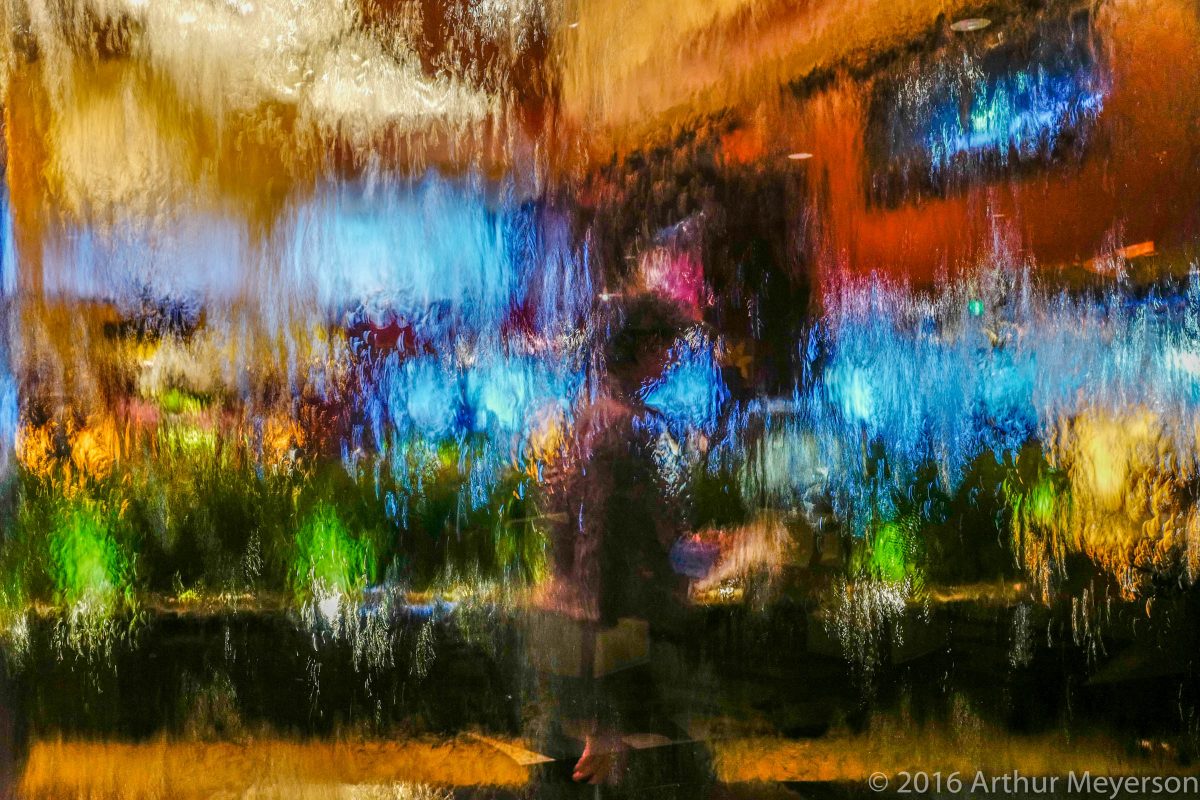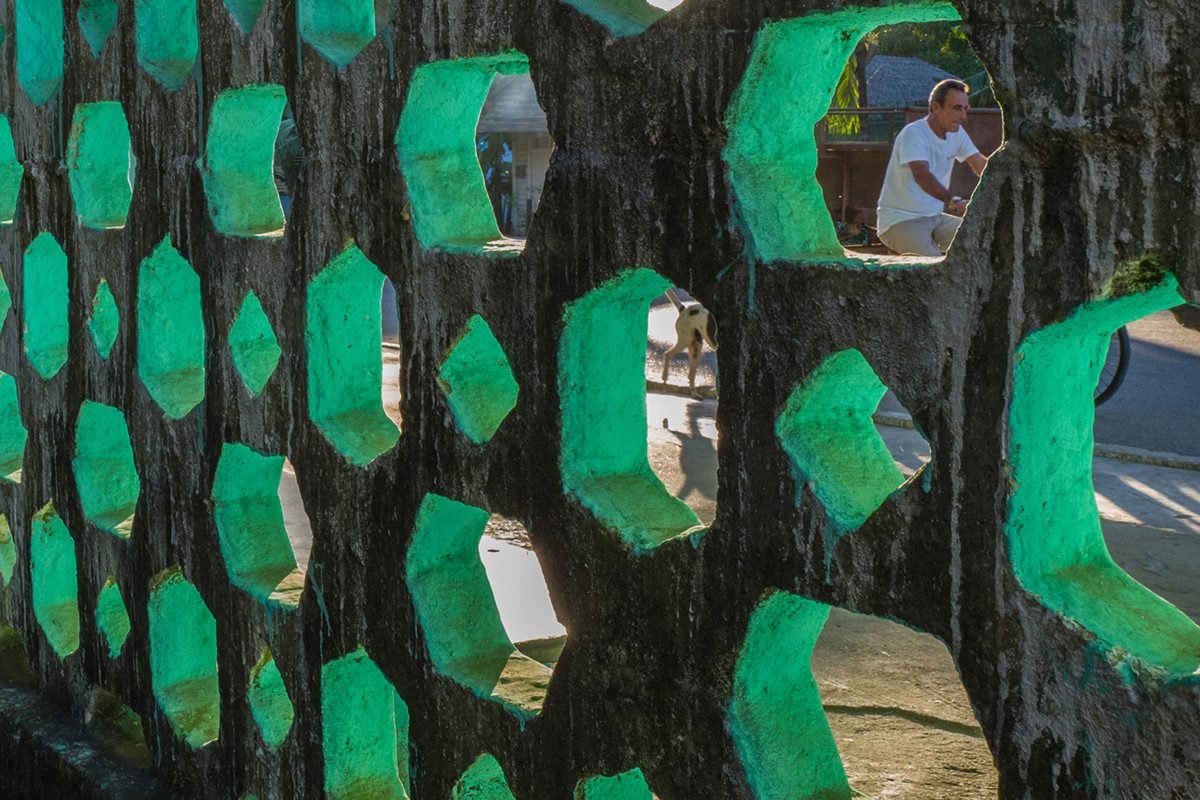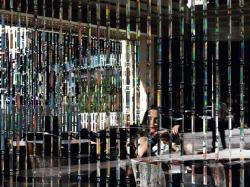In photography, a fun challenge can be to look for things you can “shoot through,” things that are a kind of found filter, one that already exists in nature. This journal entry, which is based on a presentation I first did in February 2019, will explore a number of different filters you can use as a starting point for thinking about this idea.
Water droplets & snow drifts…
Here are two examples of how I shot through the windows of my car during a rainfall, where I blurred out the background of the image:
As well as during a recent skiff of snow that left an interesting pattern on the windshield of my car, where I also let the trees and the real estate sign appear blurred out:
But you can also leave the background in focus:
Filmmaker & photographer Abbas Kiarostami played with this technique in his 2005 series, Roads & Rain, which was featured in this article by the Guardian…
Found object filters or shooting through “walls”…
You can shoot “through” a variety of things, such as through an odd curvy plastic wall at a shop under construction, which I shot in Victoria, British Columbia in March 2014 during a workshop with photographer Sam Abell:
In one of Abell’s lectures he shared with us this idea of looking “through,” as seen in the following two examples by Abell of shooting “through” objects like a fish tank and a curtain…
Photographer Arthur Meyerson also does this, as seen in Water Wall, Tokyo and in Behind the Bus Stop, Senado, through an actual concrete wall which had an interesting pattern...
From being fortunate enough to have studied with Meyerson, it is safe to say that for both of Meyerson’s photos, he likely first saw what he wanted to “shoot through,” and then composed his overall image, and then waited for individuals to pass through the frame, such as the person seen walking on the other side of the water wall, and the cyclist passing by on the other side of the concrete wall.
Finally, photographer Hannah Starkey does something similar, but unlike the found moments of Abell & Meyerson, she hires actors and uses controlled lighting and large format cameras to setup her photos to tell stories, as discussed in this 2011 interview with Starkey by the UK Telegraph, and as seen in this 2008 Untitled piece…
Ultimately, shooting “through” can help you see in layers when taking a photograph. The first layer is in the foreground, the “object” you are shooting or seeing “through,” and it’s often what is closest to you and your camera. You can then either have something with an abstracted background, with an almost shallow depth of field (as in Meyerson’s water wall photo) or you can get a number of further layers as seen in Abell’s work (where the fish tank has 3 layers behind the tank – the road, the tree / and buildings, followed by the sky which is furthest back). Seeing in layers is a fun thing to explore as you wander around the world with your camera.
By looking more closely for things in which you can shoot through, you don’t have to rely on using Photoshop later on to say superimpose a layer of raindrops over an image, or the haze of looking at a scene through a dirty window.
More inspiration…
There are many great YouTube videos on this topic of incorporating foreground elements into your photography. Here are a few that I found interesting…










